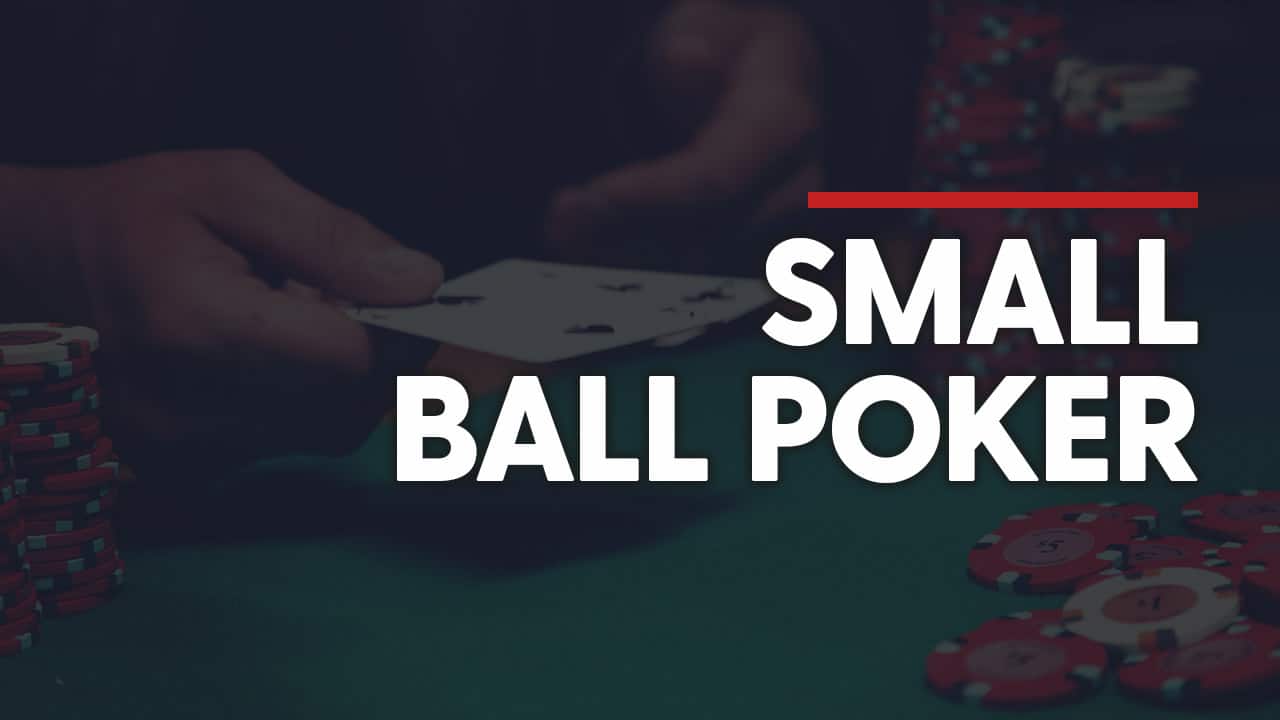Poker Short Stack Strategie
SPR, short for stack-to-pot-ratio, is a powerful concept that can help you take better lines both preflop and postflop. If you can understand and apply SPR strategy in poker you will have a mathematical framework for commitment. Here is the SPR formula. Short Stack Strategy: 5 Tips to Survive as a Short Stack. July 10, 2020 Carlos Welch. 2 Become a winning poker player for free in just 30 days! In this collection of short stack poker strategy.
This is about a near game theory optimal (GTO) strategy for short stack no limit holdem.
If you play in the $1/$2 no limit holdem game at the California Commerce Casino, the buyin is $40 or 20 big blinds (20BB). If you play online for real money at Blck Chip Poker, Americas Cardroom, or Bovada, the minimum buyins range between 20-40 big blinds. These may be considered to be short stacked games. The fast foldem holdem games at Bovada seem to be 50BB for a buyin.
Except for the first few rounds, most people in a tournament are short stacked most of the time.
Learn your preflop ranges. Every decision you make while short stacked preflop is worth a big chunk.
There are some misconceptions about big stacks. Big stacks hold no intrinsic advantage over small stacks in cash no limit hold 'em games - see Ed Miller's Getting Started in Hold 'em.
There may be psychological aspects to having a particlular stack size.
This is just a continuum really. The smaller the stack, the fewer hands we can play. The deeper the stack, the more hands we can play in general. In particlular, in when we have a short stack, we do not play any come hands like 76 suited. All of our hands will have value (i.e. pair value or high card value).
We consider a short stack to be 25 big blinds (25BB) or less.
We will use Ed Miller's Short Stack Opening Strategy from our textbook.
Opening
When no one has entered the pot except the blinds
- Early position: TT+, AK
- Middle position: 99+, AQ+
- Late position: 77+, AT+, KQ
Entering the pot when someone has raised
If there is one raise in front of you, regardless of position, play only TT+ and AK. If there is more than one raise in front of you, play only KK+ (i.e. 3-bet or 4-bet with KK+).
Sizing your first raise
Usually we want to bring it in for 3-5BB. If there are only limpers in front of you, raise to 3-5BB plus 1BB per limper (if you have a hand that you would normally open with in that position). In general, we like to raise more in early positions and less from later postions (if this confuses you, simply always raise to 4BB+1BB/limper).
If someone has raised in front of you and you have a playable hand (TT+, AK), usually go all in. If your stack is larger than 30BB-35BB (i.e. becoming a medium stack) or when there is only one raiser and the raise was the minimum, make the largest raise you think your opponent will call.
When you get reraised by someone behind you, usually you should go all in or fold. If you have QQ+ or AK, go all in. Go all in with any hand if your (or your opponent's) remaining stack is less than twice the size of your original bet.
A few more hands we can sometimes play
There are a few more hands we can play when there are just limpers. If you are on the button or cutoff, after only limpers, call with 22-66, A2-A9 and any two suted cards that are both ten or higher ( i.e. KJs, KTs, QJs, QTs, JTs). If you have a stronger hand, be sure to raise as described above.
More on Ed Miller's SSS
Crushing Short Stacks - The Playbook - this is what a deep stacker needs to do when playing against us. This is how we should play when playing against short stackers.
Seems like there is some controversy about this strategy. I suspect that this is a case of sour grapes from the deep stackers. They need to adjust their play when they are in the pot with us and they seem resistant to doing so.
This thread (from 2007!) is about how to adjust to playing with a deep stack against a small stack. This is a very informative article, please read this. TLDR: Crushing Short Stacks - The Playbook - this is what a deep stacker needs to do when playing against us. This is how we should play when playing against short stackers.
My take on this is that sss is the correct way to play at this stack size (provided that these sss's are near to gto).
Another interesting thing I found online about sss's was: '... the truth is that you should play as high VPIP as you can until you start losing. 15% is the baseline for any 9player game with the same rake. Back in the day you could win with 12/10 because players were so bad. As the skill level increased overall in the game, you had to bring your VPIP up to 15% or better, (unless you were an FPP whoring multitabler who could play at 14%) '. This makes some sense: play as loose as possible, but tighter than most of your opponents.
interesting: http://forumserver.twoplustwo.com/15/poker-theory/short-stack-strategy-holes-ed-miller-562943/ - http://forumserver.twoplustwo.com/showpost.php?p=24079874&postcount=26 http://forumserver.twoplustwo.com/showpost.php?p=10855133&postcount=49
Very goog read: http://forumserver.twoplustwo.com/32/beginners-questions/i-grew-up-learning-30-bis-where-enough-1426985/ add http://archives1.twoplustwo.com/showflat.php?Cat=0&Number=3029808&page=0&fpart=1&vc=1 and other links like this https://groups.google.com/forum/#!topicsearchin/rec.gambling.poker/%22short$20stack$20strategy%22/rec.gambling.poker/mdo7ddmdKcU
more stuff The 3 Factors That Should Determine Your Cash Game Buy-In http://www.pokernews.com/strategy/3-factors-that-should-determine-your-cash-game-buy-in-19629.htm Positives to Playing a Short Stack in Tournaments http://www.pokernews.com/strategy/positives-to-playing-a-short-stack-in-tournaments-20569.htm WSOP 2014: Short Stack Strategies with Bart Hanson http://www.pokernews.com/live-reporting/2014-wsop/event-54/post.232972.htm http://www.pokertube.com/videos/pca-2015-jonathan-duhamel-on-short-stack-bubble-strategy http://www.tournamentpokeredge.com/innovative-short-stack-strategy/ Learning Poker By Short Stacking https://www.youtube.com/watch?v=Z5WCWJin8FU http://my.888poker.com/go/thread/view/111146/30044265/maths-in-poker-and-game-theory?pg=1
http://www.cardschat.com/f11/short-stacking-sucks-240807/ A Day In The Life Of A Short Stacker: Part 1 https://www.youtube.com/watch?v=lQ7wBBIzdD8For many players who regularly sit down at cash tables in the modern game, once they have found some level of comfort with the quality of their 'full stacked 100bb' skills, one of the ways in which they frequently find themselves in awkward situations is when faced with an opponent wielding a stack typically sized between 20 – 50 big blinds. Here I hope to shed some light on short stack poker strategy to help improving players who are looking for some answers on the matter.
This information, along with our HUD stats should allow us to nail down exactly what strategy to use against them. No more guessing, or even better, no more nitting it up. Many players fall into the trap of folding too much against a short stacked opponent for reasons such as having a fear of getting shoved on and not knowing how wide they can profitably call. They just have a feeling that they don't want to get involved, assuming that it isn't so important anyway.

The shorter the stack the more extreme your adjustment should be. Rather than posting a number of hand charts for each stack size, I will attempt to give more general advice so you can think for yourself in-game, and do your own EV calculations to make yourself more comfortable.
Changing hand values
For our purposes we should distinguish the starting hands between high equity type, and low equity type/speculative.
However, one thing that pocket pairs are okay at, is bluffing in an all in situation where we are sure we have at least some fold equity, and even if we get called we can reasonably expect to have around 35% equity. Suited aces will have slightly less equity if called, but can be used to extend your bluffing range if your opponent is expected to fold with a high enough frequency.
Multi-Way Pots
When we do find ourselves playing multi-way with a mix of short and deep stacks we just need to accept that our creative play options against the other deep stacks are almost non existent. Fortunately, in the micro stake games we have an added bonus that many players will adjust terribly against the short stack and sometimes we will have a strong hand, this more than makes up for when we have to miss out on potential value to avoid a short stack exploiting us.
Open Raise Sizes
This means we lose less when we get re-raised pre flop, and we also make the pot smaller to begin with, making it a less attractive steal opportunity. Most short stackers at the micro stakes play a strategy which is too rigid, meaning that when we use a smaller size to steal with, they are unlikely to adjust enough to counter.
Trapping
It should now be obvious that one of the benefits of playing with a short stack, is that we can steal in many situations. Even bad players learn quickly that they can get many folds in a variety of situations. One of the most common spots is when there is an open raise preflop and one or more callers. The average short stacker will be shoving all-in with a wide range and expecting to get plenty of folds.
So it logically follows if we have a premium hand it is worth considering cold calling instead of the usual squeeze play, and hoping that the short stacker shoves. Not only has under representing our hand helped us to trap one player for all their chips, the original raiser might now feel they can get us to fold by shoving the remainder of their 100bb stack.
Example EV Calculation

 I hope this article was useful for you and I look forward to reading your comments below!
I hope this article was useful for you and I look forward to reading your comments below!More Top Recommended Articles!
If you enjoyed this article, take a look at some more top recommended articles from PokerVIP!Poker Short Stack Strategies
Short Stack Poker Tournament Strategy
- How to Play Back at Regs - Moves That You Can Pull
- How to Get in the Zone and Play Your Best Poker